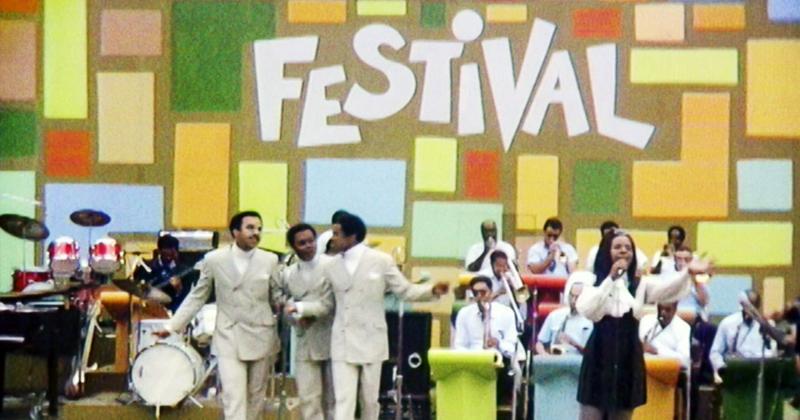The Harlem Cultural Festival
By | August 21, 2021

In the Summer of 1969, Woodstock became the music festival to remember. At the time, other youth-oriented festivals, like Monterey and Newport were starting to appear. The Harlem Cultural Festival, with its six free shows from June 29 to August 24, 1969, was different; it appealed to a large cross-section of the community, drawing families and churchgoers as well as the youth of New York City. The Harlem Cultural Festival celebrated African American music and culture. Just as Woodstock showcased iconic musicians, the Harlem Cultural Festival featured the performances of some of the greats: B.B. King, Gladys Knight & the Pips, and Stevie Wonder were among those to perform during the festival, with performances on Sundays at 3 p.m. in Harlem’s Mount Morris Park (which is now Marcus Garvey Park). The six shows had a combined attendance of close to 300,000, rivaling that of Woodstock.

It Got Its Start In 1967
The festival got its start in 1967, when the city’s Parks Department hired Tony Lawrence, a local entertainer, to put together summer programming in Harlem. Tony Lawrence was a music and television performer in Virginia before he moved to New York. He sang a combination of Calypso, R&B, and soul ballads, recording forgotten singles for Jude Records. He found a fan base by the mid-1960s and then began working as a church Youth Director. He also raised funds for a playground and a Head Start program. In 1967, he started working for New York’s Parks Department, and they began working on putting together the festival. The festival had a small budget, but still attracted artists like Count Basie and Tito Puente in its first two years. It continued to grow over three summers, becoming a place for black music, culture, and politics. It also became a place for up-and-coming politicians like Robert Kennedy to be seen.

Over The Years It Grew To An Impressive Size
By 1968, the Sunday evening shows were bringing in 25,000 fans each night. Then, after the 1968 Festival, Lawrence worked during the off-season to secure funding to help expand it for 1969, and he planned to have it broadcast on national television. They built a large, multi-colored stage in Morris Park, facing West to take advantage of the afternoon light since they did not have the budget for lights. Sixteen months before the festival, John Lindsay, a progressive Republican was elected mayor of New York. He was dedicated to easing the racial tensions in the city, and the festival was seen as a tool in that regard. Lindsay was one of the speakers at the festival and was introduced as the black community’s “blue-eyed soul brother.”

An Impressive Lineup
The lineup was impressive and included some memorable appearances. Mavis Staples helped gospel legend Mahalia Jackson sing “Precious Lord, Take My Hand,” Martin Luther King Jr.’s favorite song. The music ranged from gospel to soul, jazz, blues, to the funk of Sly and the Family Stone. The comic legends Pigmeat Markham and Moms Mabley made appearances, and the final show included a Miss Harlem pageant. In addition to the performances, the festival provided a stage for issues. Tony Lawrence invited the 200 people who had protested the construction of an office building instead of a school. Jesse Jackson spoke, and Nina Simone read a black nationalist poem by David Nelson, which contrasted with the tones of Jesse Jackson’s speech. Hal Tulchin managed to capture the entire event on film, as he thought that the music and the setting could be made into a feature-length film. However, he was unable to sell it to any film or television outlet, although New York's WNEW-TV Metromedia Channel 5 broadcast footage on Saturday evenings at 10:30, from June-August 1969.

Despite Its Success, The Festival Did Not Continue
After the summer of 1969, the summer concert series did not happen again, even though it had been announced for the following summer. With the success of the Festival, Lawrence planned to bring it across the country. He began by staging the “Love Festival” in Newark, New Jersey, in the Fall of 1969, and it attracted more than 60,000 fans. However, the remainder of Lawrence’s plans would not be realized. In 1972, he made unfounded claims about his former business partners, claiming they had stolen hundreds of thousands of dollars from the festival’s funds. The Amsterdam News published stories about the allegations, claiming that “Lawrence is suing his former white partners in promoting the festival for $100 million for fraud.” This story was never substantiated, and the Amsterdam News was the only newspaper to print it as there was nothing to corroborate his stories. Lawrence also claimed that he was being threatened by a “mafia enforcer” and that his car was blown up when he was visiting his friend Sidney Poitier. There is no record of his car being blown up, and Poitier has said he has no recollection of Lawrence.
Lawrence tried to recreate the festival in 1974, calling it the International Harlem Cultural Festival, but it never happened. Lawrence appeared in nightclubs and local productions of plays in the 1980s, but he then disappeared from public life.
